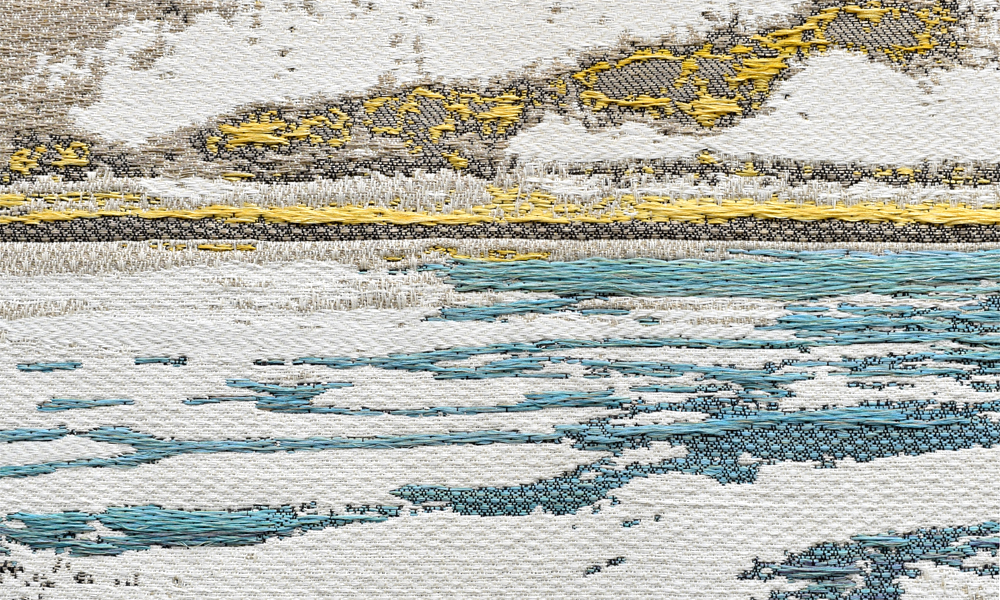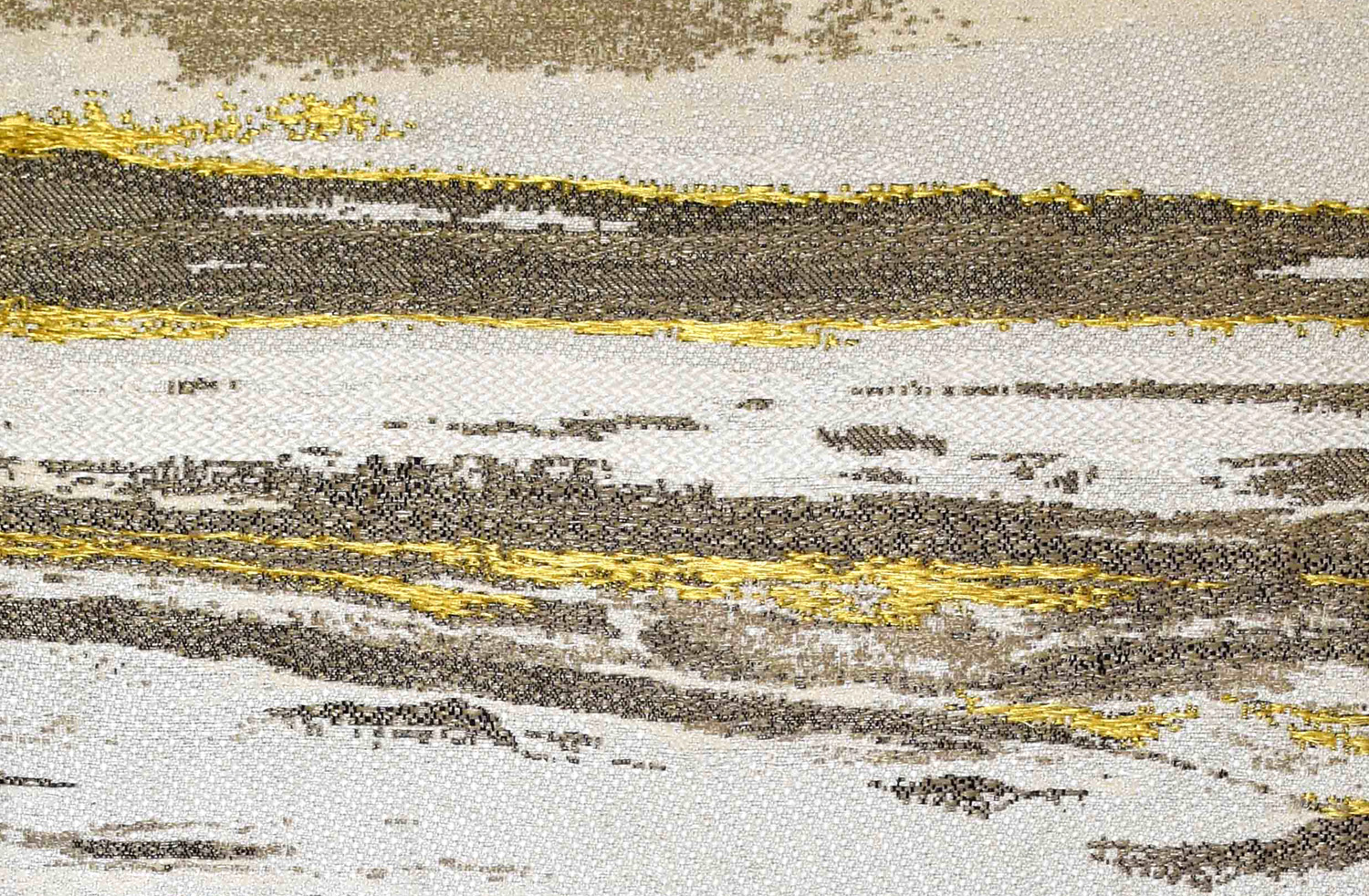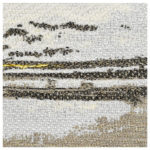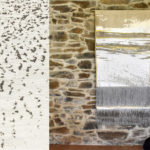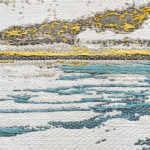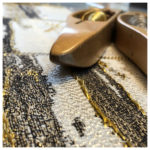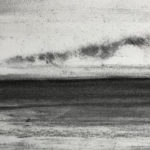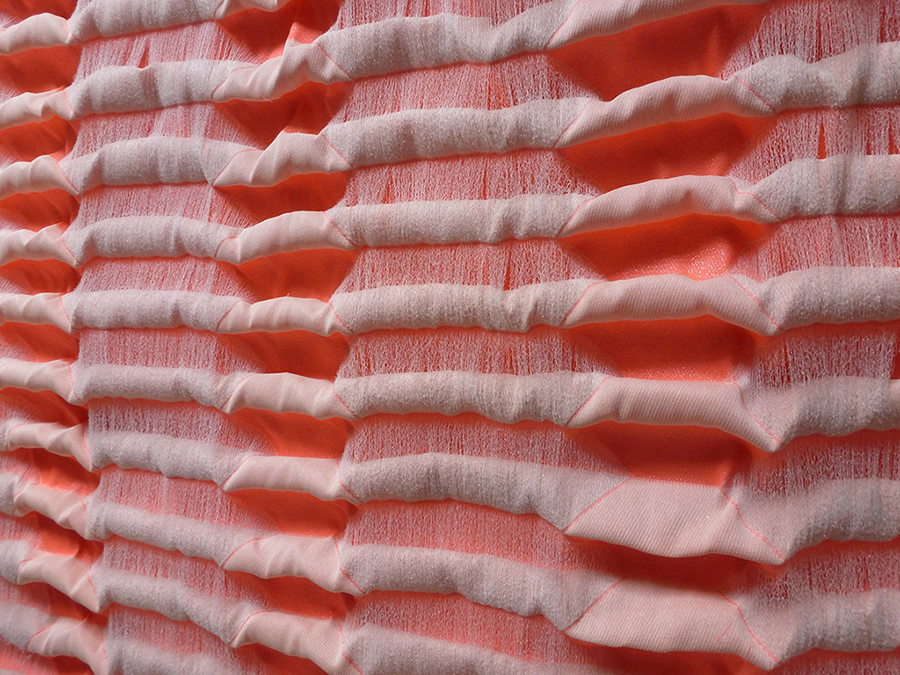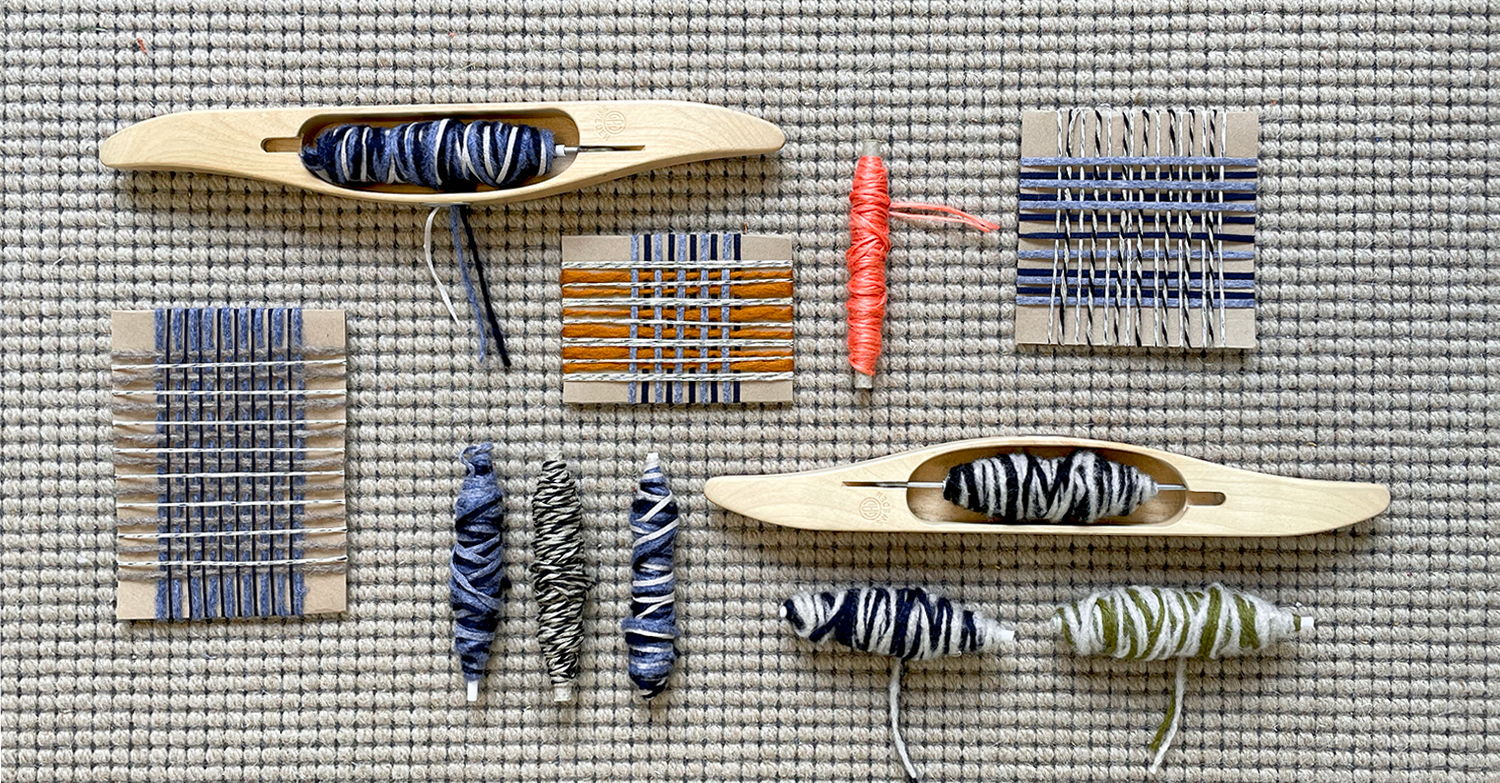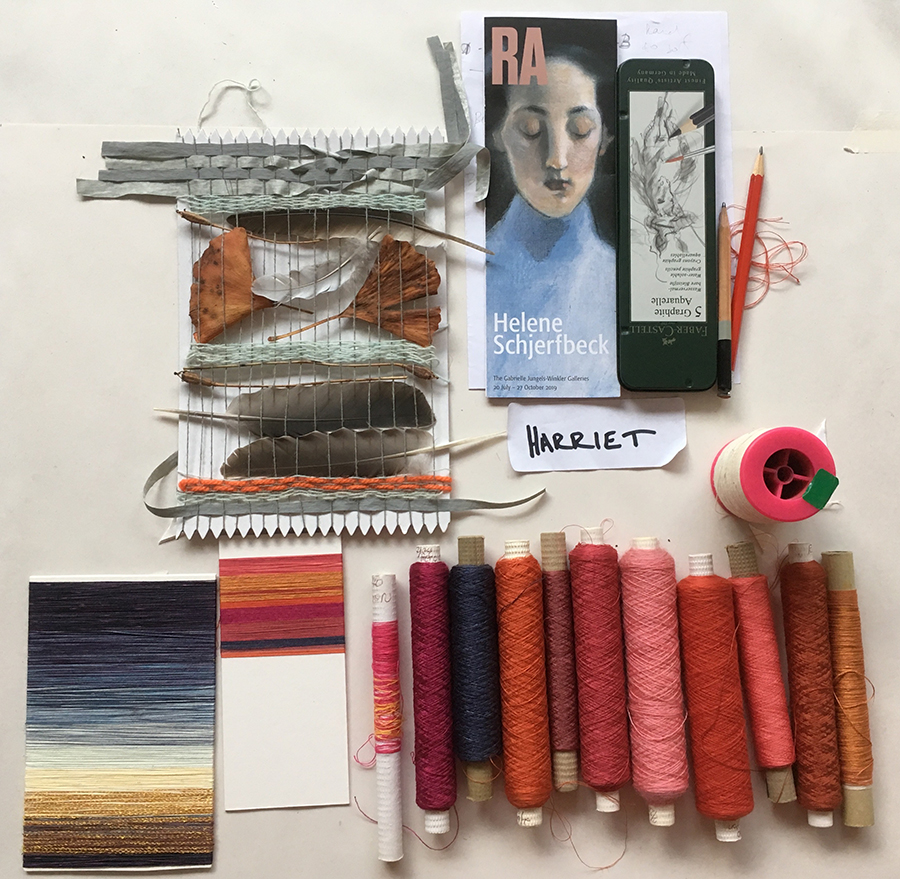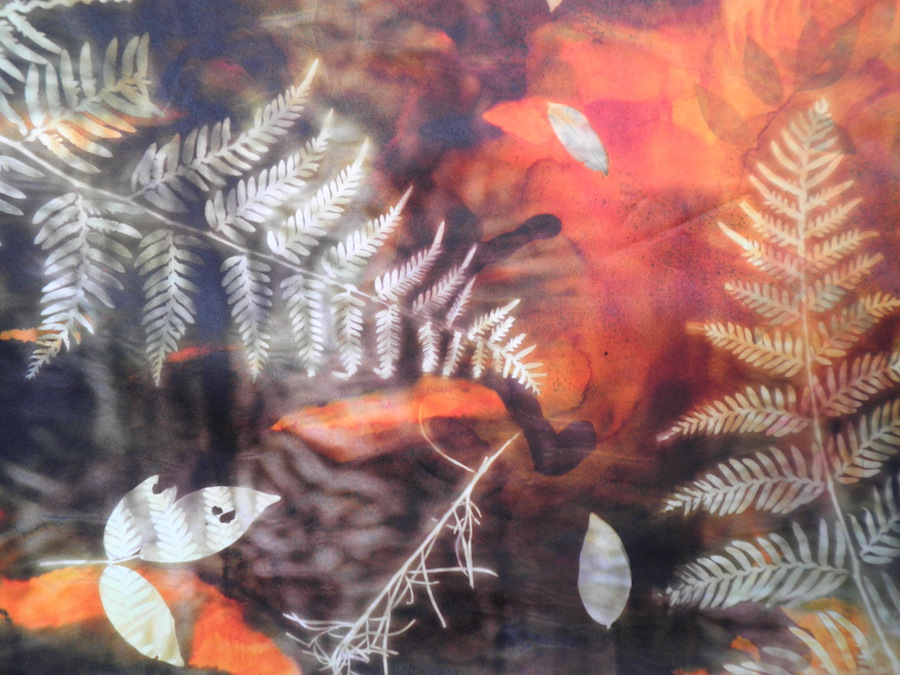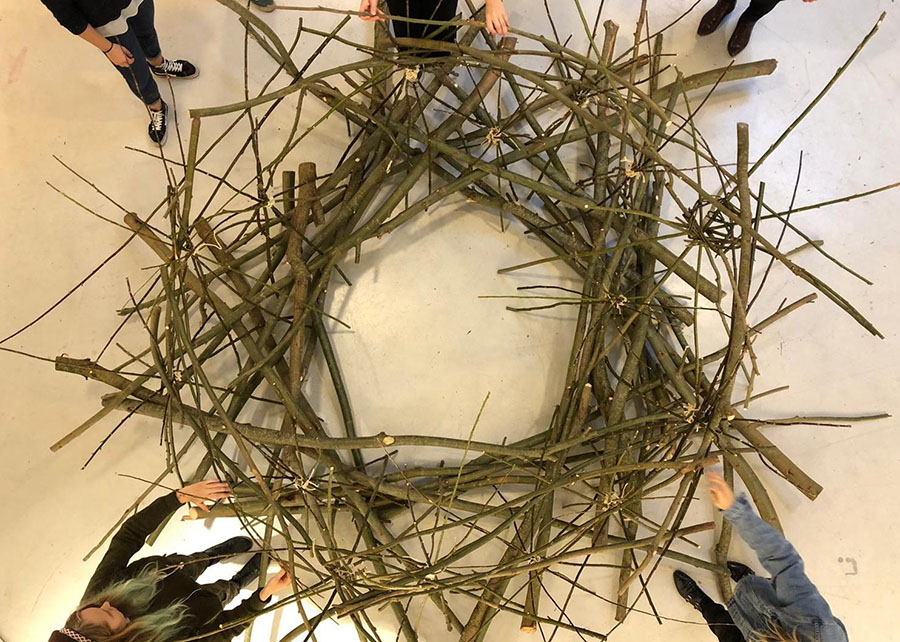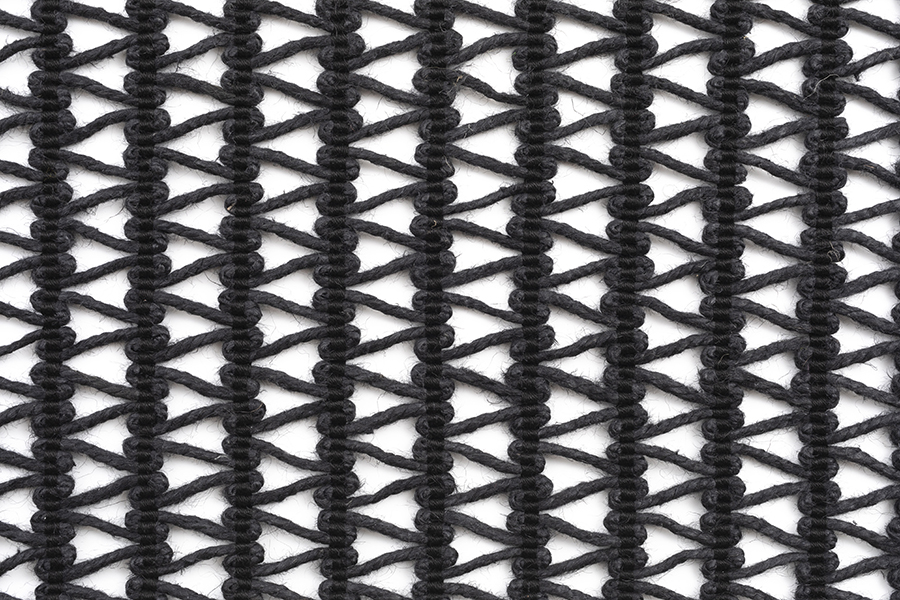 Woven / Unwoven is a major new exhibition of artworks by Laura Thomas at Ruthin Craft Centre, open from the 30th September – 7th January 2024.
Woven / Unwoven is a major new exhibition of artworks by Laura Thomas at Ruthin Craft Centre, open from the 30th September – 7th January 2024.
The exhibition represents a distillation of all of Laura’s areas of interest in working with thread, making both woven and unwoven works. The transformation of passive threads, held taut on a loom to be woven into a fabric or placed into position to be encapsulated in glass or resin has kept her transfixed for over two decades and is at the very root of this collection of works.
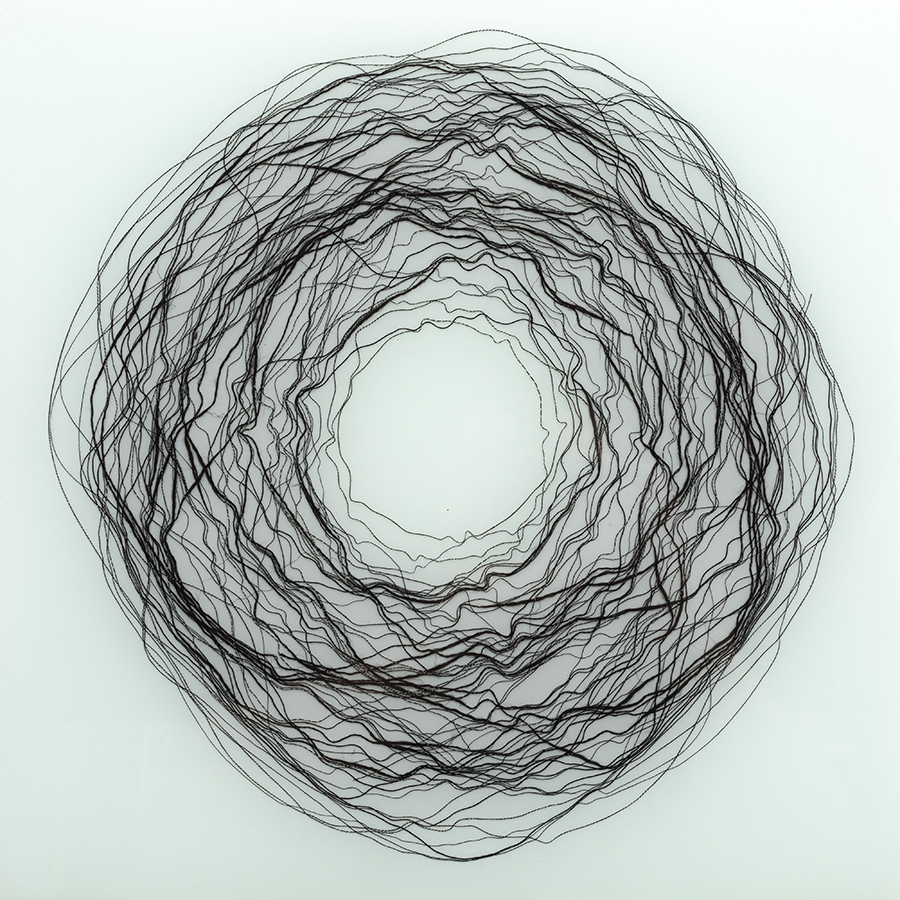 Laura uses threads as lines to evoke what captures her attention in the world around her whether that be coastal horizons; the edge of a hillscape where land meets sky; a full moon; or the minutiae within coastal strata’s and sand patterns that have captivated her since childhood.
Laura uses threads as lines to evoke what captures her attention in the world around her whether that be coastal horizons; the edge of a hillscape where land meets sky; a full moon; or the minutiae within coastal strata’s and sand patterns that have captivated her since childhood.
 Untypical weave structures have always been a hallmark of Laura’s practice, and are indeed fundamental to this new body of work. Many of the textiles are open Spanish Lace constructions, or sparse leno weaves, with selectively cut weft floats allowing for views through the surface at what lies beyond. Rya knots and cut corduroy’s create inviting surfaces evoking coastal grasses and furrowed fields.
Untypical weave structures have always been a hallmark of Laura’s practice, and are indeed fundamental to this new body of work. Many of the textiles are open Spanish Lace constructions, or sparse leno weaves, with selectively cut weft floats allowing for views through the surface at what lies beyond. Rya knots and cut corduroy’s create inviting surfaces evoking coastal grasses and furrowed fields.

